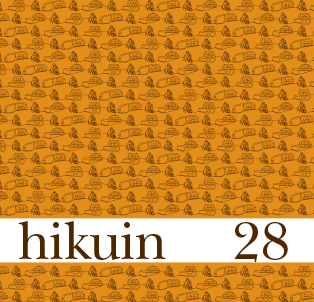Lindholtgårdovnen
Abstract
The Linholtgård kiln
By Ann Bodilsen
In 1998, upon exploring a ploughed windbreak at Lindholtgård in Sevel parish (fig. 1), a good deal of misfired pottery and large clumps of fired clay were registered, apparently originating from a potter’s kiln. In June 1999, an excavation was therefore started in the area, on a section of about 100 square meters. The potter’s kiln was located on sloping terrain, down towards a small brook. After the topsoil was removed by machine, the outline of a potter’s kiln appeared, with an accompanying stoke pit and behind it a pit with waster (fig. 2). The kiln construction itself was very poorly conserved, and only the layers u and x, affected by fire, can with certainty be interpreted as the remains of a kiln. Layer u consists of parts of a burnt-red clay surface with single horizontally layered potsherds on the surface, while layer x consists of yellowishbrown loamy sand with a hard-burned surface. The two layers can be interpreted as two different phases of the bottom of the kiln. By measuring the extension of layer u and x the kiln is assumed to have been a minimum of 1.4 m wide and 2.75 m long, but the precise size is unknown, as it was not possible to observe any definite delimitation of the kiln. In the lengthwise cut (fig. 3) it is evident that the bottom of the kiln rises towards its back wall. The kiln installation was so poorly conserved that it was not possible to further account for its construction and type. No traces from flues were observed in the cross profile, and it is thus possible to reject the idea that this is a kiln with a platform construction. It is indirectly possible to get an impression of the construction of the kiln dome, there being traces of a skeleton-bearing structure made of branches in a few of the fragments from the kiln dome (fig. 4). However, there are also fragments of kiln dome without traces of branches, so the dome may have been constructed differently in the different phases. The kiln was installed above a large, long oval pit filled with different, slightly loamy layers of sand without finds of any kind. In this respect its contents were distinctly different from those of the stoke pit and the waster pit. The pit is therefore interpreted as being a prerequisite for or a part of the kiln construction, but without it being possible to provide a comprehensive explanation. The stoke pit lies north of the apparent stoke opening of the kiln and is a four- to five-meter-wide trough-shaped pit. Its length is unknown, as the layer of ashes continues down the slope towards the brook. The stoke pit is asymmetrically situated in respect to the stoke opening of the kiln, and it has been suggested that a fence or dike or the like existed toward the west to shield against the wind. However, no traces of any of these were found. The objects found in the stoke pit consisted of misfired pottery and fragments of kiln dome. However, a single object was found that is interpreted as a tool for forging the rounded body of the vessels (fig. 6). The fairly circular waster pit was situated southeast of the kiln. The pit is interpreted as a pit that provided clay and was later used as a pit for waster. The objects from the waster pit consisted of great quantities of misfired pottery, fragments of the dome, as well as a number of brick and tile fragments. The brick and tile fragments are assumed to have been used in connection with stacking the pottery in the kiln, many of the fragments displaying evidence of glaze. On the basis of the pottery, the Lindholtgård kiln can be dated to the latter half of the 1300s and most likely to the years just prior to the year 1400. The potter’s kiln in Lindholtgård faces NW-SE, with its stoke opening facing northwest, where the stoke pit is also located. Despite its poor state of conservation, it seems reasonable to describe the kiln in Lindholtgaard as belonging to the horizontal or downdraft one-chamber type without platform construction inside. In respect to the parallel Danish material, it seems to be most closely related to the Faurholm kiln, with which it is also fairly contemporaneous in light of the pottery material.
Downloads
Published
How to Cite
Issue
Section
License
Forfatter og Forlag.





